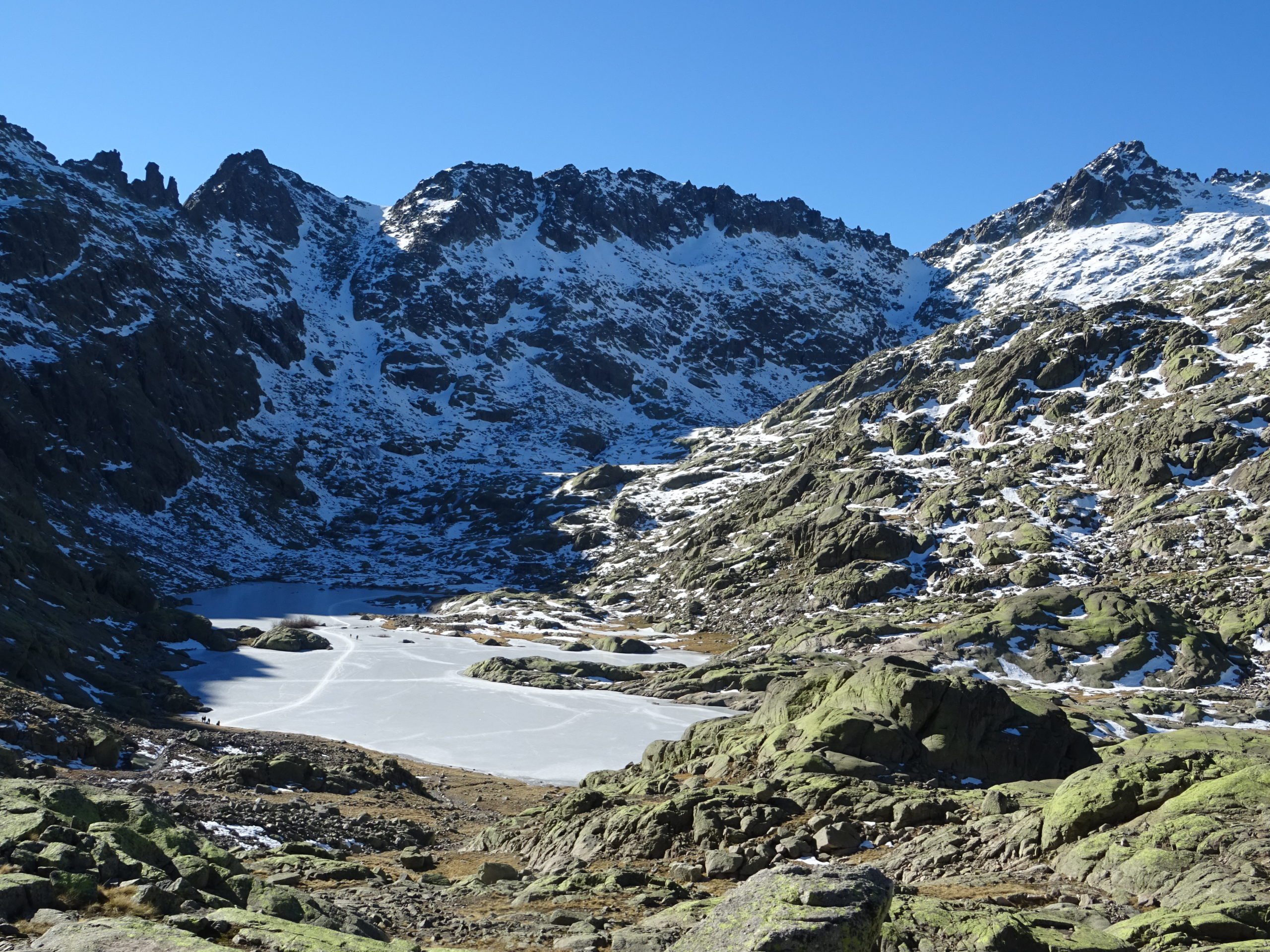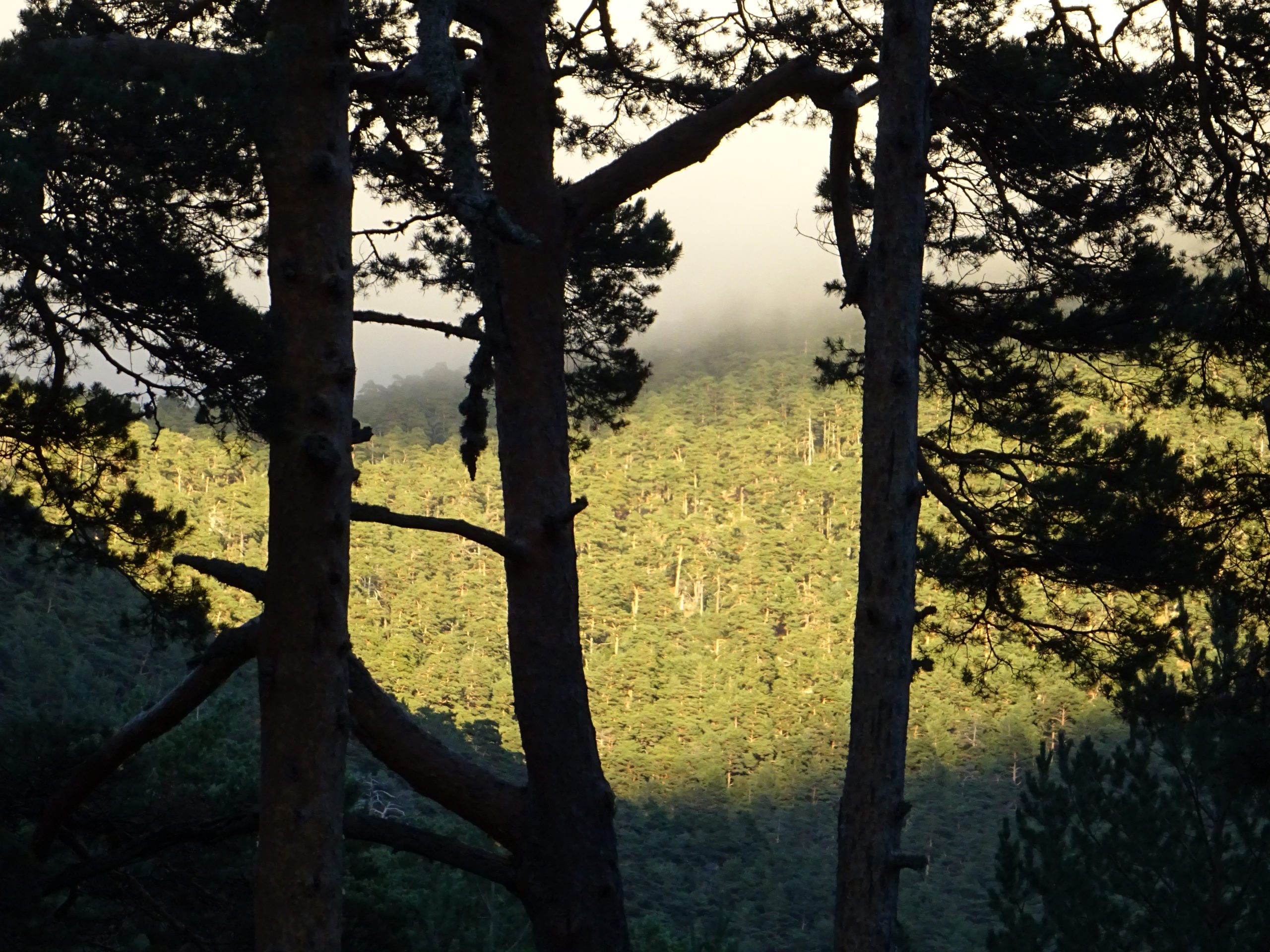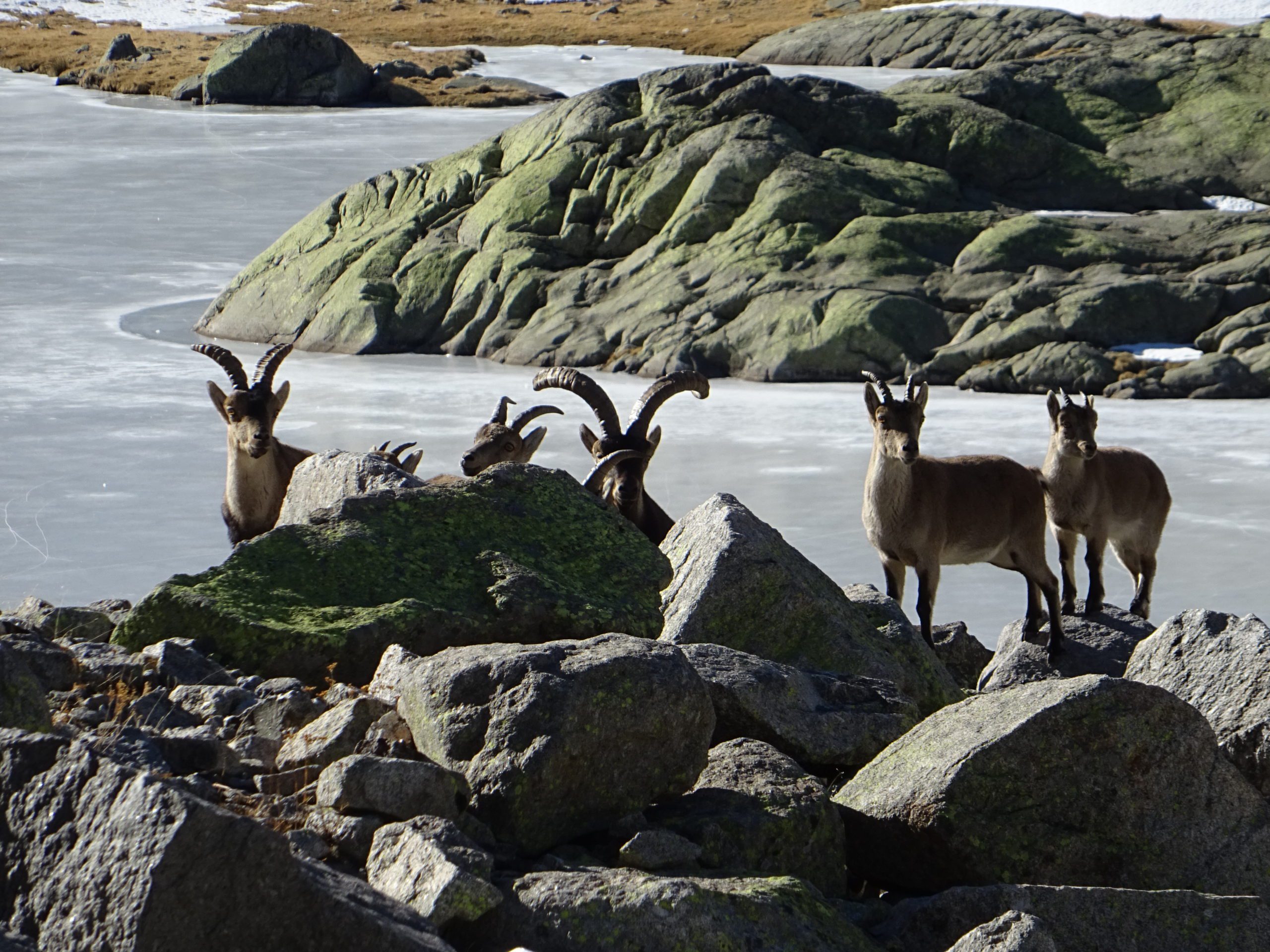
Hiking, Culture and Gastronomy in the Central Mountains: Guadarrama and Gredos

-
Place
Central System Gredos, Castilla y León España
-
Duration
8 days
-
Season
Summer
-
Level
⤤See table
Scheduled departures
GALLERY



THE TRIP
But, are there mountains in Madrid? We often get this question, and we usually answer it with a “even higher than 2.400 m” We don´t want to test your geography knowledge about Spain, but the truth is that there are much more than museums, historic neighbourhoods, monuments and restaurants in Madrid. Do you want to come with us to see it?
If the answer is “yes”, you will not only be surprised while you walk in the beautiful landscapes of Sierra de Guadarrama and Gredos (where in fact, if you want, you can go as high as 2.428 m in Peñalara, its highest mountain) but that you will also visit picturesque Castilian villages full of history like El Escorial, La Granja or Arenas de San Pedro, and you will sleep in charming hotels that you will love for their authenticity and comfort. Moreover, we have some surprises kept for you by water, air and land, but we prefer to tell you in person while you enjoy the Castilian gastronomy at the restaurants selected by our committee of experts (well, we admit it, we are the experts…) And of course, without forgetting the charms of the cities of Madrid, Ávila and Segovia, and they are not just a few!
THE DESTINATION
Sierra de Guadarrama
The Sierra de Guadarrama forms part of the natural division between the northern and southern plateaux in the central area of the Iberian Peninsula. Located between the mountains of Gredos and Ayllón, it extends in a southwest-northeast direction through the regions of Madrid, Segovia and Avila.
It currently houses the Guadarrama National Park with La Pedriza as one of the most characteristic and unique areas of the sierra, and the peak of Peñalara (2,428 m) as the roof of the chain.
The geography of this region is conditioned by the nature of the rocks and the erosive processes that have shaped its peaks. We found granite and gneiss of Hercephalic age that have withstood erosion over millions of years.
The glaciers left their imprint and thus we can see it in the magnificent corrie of Peñalara with its moraines, lagoons originated by the carving of the glacier and other indicators that tell us the geological history of these mountains.
The flora is characterized by the abundance of scot pine forests, oak and holm oaks in lower areas and of grasslands and shrubs in high mountain areas. In these ecosystems we find deer, wild boar, roe deer and badgers, among other mammals. In addition to this, there is a great amount of species of aquatic birds in the reservoirs, and great raptors like the imperial eagle or the black vulture.
The climate is continental Mediterranean and varies considerably depending on the height, being in the high areas wetter and colder than in the Central Plateau. The snow is usually present between the months of December and April from 1.800 meters. Unprotected from other mountain systems, on the cornices and peaks the wind and storms are usually very strong.
As a natural and strategic boundary, its inhabitants have created different routes to control and to cross it. The oldest mountain pass that is preserved is the Puerto de la Fuenfría with its Roman road dating from the first century. Currently the Sierra de Guadarrama is crossed by numerous mountain passes, some of them with a height above 1.800 meters. This fact, together with the proximity to the city of Madrid, makes these mountains have a large influx of mountaineers and tourists.
Its landscapes, good state of preservation and good communications make the Sierra de Guadarrama the ideal place for mountain sports such as mountain skiing, cross-country skiing, hiking or mountain biking.
The proximity to cities such as Madrid, Avila and Segovia (the latter two declared World Heritage by UNESCO) along with other cultural attractions such as La Granja de San Ildefonso, San Lorenzo del Escorial or the Monastery of Santa María de El Paular are other reasons to visit this mountain range. We cannot forget the Castilian gastronomy, with its roasts of lamb and suckling pig, the morcilla of Burgos, the beans of La Granja or the cocido of Madrid and the red wines of the Ribera del Duero or the white’s ones of Rueda.
Sierra de Gredos
The Sierra de Gredos is part of the Central System with a length of 500 km in the centre of the Iberian Peninsula. It is the watershed of the basins of the rivers, Duero to the north, and Tajo to the south. The southern slopes show greater difference in altitude than the northern face. That’s why towns like Arenas de San Pedro or Candeleda located in the southern valley of Tiétar, have altitudes of 510 and 430 meters respectively, while places of the northern side, located at a similar distance from the watershed, such as the Parador National of Gredos or Hoyos del Espino have altitudes of 1.580 and 1.460 meters respectively.
Almanzor peak (2.592 meters) is the highest Summit in the central mountains and it is part of the Cirque of Gredos.
This cirque together with the one of Cinco Lagunas, constitute two of the most attractive and wild places of the mountain range and an interesting place for mountaineering in all its forms.
The climate is alpine-subalpine and is characterized by cold winters with snow between the months of December and April, mainly above 1.500 meters. Summers are sunny, hot and dry. There is a great contrast between the south and north slopes that is reflected in the vegetation.
In the southern slopes have a less cold climate in winter and with some more rainfall, we can see pine, chestnut and oak forests; In the northern slopes the climate is colder and windier and the precipitations are scarcer, so the forest is less developed (also the product of intensive logging) and the jara and the scrub take over the landscape.
We find a similar vegetation in the higher areas of the mountains where, on the granite rock, settle lichens with greenish and blackish colours.
The mountain goat of Gredos (Capra pyrenaica victoriae) is the most famous animal species in Gredos. The silhouette of the males is enhanced by its large antlers, which can reach about one meter in length. There are also numerous birds of prey emphasizing the griffon vulture, eagle, short eagle, eagle, royal kite, hawk, etc.
Very close to Gredos we find the cities of Segovia, Ávila, Salamanca and Toledo, all of them declared a World Heritage Site by UNESCO. Other villages of cultural interest are Barco de Ávila, with its castle of Valdecorneja, the walls surrounding the city (XII century) and the bridge (XIII century) on the Tormes river. The villages of Navalperal, Navacepeda and Navarredonda have XVI century churches.
On the southern slopes are the villages of the Valley of Cinco Villas with San Esteban del Valle, Mombeltrán, Cuevas de Pedro Bernardo and Arenas de San Pedro with an architectural, archaeological and cultural richness that is worth a visit. And of course, in spring, the Valle del Jerte and Ambroz with their cherry blossoms.
HIGHLIGHTS
- To visit the Guadarrama National Park.
- To visit monumental cities like Segovia, La Granja de San Ildefonso, El Escorial, Sepúlveda, Pedraza and Avila.
- To enjoy the great Castilian gastronomy (Giant broad beans from La Granja, roasted baby lamb and suckling pig, and veal T-bone steak from Avila).
MORE INFORMATION
Equipment required
It is important to carry little weight in the backpack to walk comfortably, so it is recommended to take only the essential material and clothing.
- Backpack (between 25-35 litres).
- Trekking boots or shoes.
- Folding trekking poles.
- Clothing:
- Socks.
- Long and short trekking pants
- Thermal shirt (first layer). A spare change.
- Fleece jacket or similar (second layer).
- Gore-Tex type jacket and pants (third layer).
- Primaloft jacket or light down insulated jacket.
- Fleece, light type of gloves.
- Hat and cap.
- Sunglasses.
- Head lamp (extra batteries).
- Water bottle or water bag Camelback type of minimum capacity 1 liter.
- First aid kit and essential toiletries.
Notes
Date Flexibility
Aside from the regular travel trip dates, we are flexible to reconsider new dates if those are more convenient to the client’s leisure plans. Do not hesitate to contact us should you have any different dates in mind.
Time and meeting point
One week prior to the trip departure date, an email will be sent to each participant to give away the meeting point and time along with the guide contact information. At this point any information considered essential to the trip organization will be shared.
Plane tickets (if applicable)
If case you wish us to handle you plane ticket, please contact us with airport arrival and departure details and number of needed luggage. Before issuing any ticket, Price and details Will be send to the client for its approval.
Muntania fee for plane ticket management is 20€ per person.
If, otherwise, you handle your plane tickets, please coordinate with us before hand to check on arrival and departure information.
Please take into consideration getting with you on your carry-on luggage some set of clothing in case of checked luggage lose.
Trekking Backpack
Very important to carry out just indispensable material and clothing to walk at ease. You would not need to take food supplies and clothing can be hand-wash daily. We recommend backpack weight between 6 to 10 kg.
Insurance policy
This activity includes a basic insurance policy; however, we highly recommend to add, for wider coverage, an extra specific travel policy. This extra policy can be contracted exclusively for the activity dates or annually (flexible starting coverage date), covering not just Muntania Outdoors trips but any other sport activity you may carry out throughout the year.
Extra insurance coverage with cancellation option, will allow you or a family member, in case of incident, to get back the total paid amount (or a percentage if you are already travelling) either for plane tickets or any trip service you might have hired. Moreover, through this coverage home return expenses will be taken care of.
Intermundial insurance company is our supplier for extra coverage insurances; thanks to the signed agreement between parties, Muntania gets to offer lower prices than handling directly with them. The travel insurance with cancellation option offered by Muntania will covered up to 900€ for national trips and 2000€ for abroad travel. In case your total trip cost is higher than the given coverage limit, an extension is always possible (please consult).
Links of interest
PROGRAM
RELATED TRIPS
- Places available
- Confirmed departure
- Last places available
- Group completed

 5 days
5 days